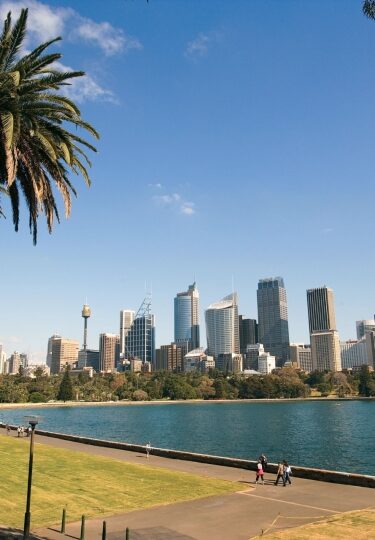The best time to visit Sydney, Australia is the summer months, December, January, and February, which are the opposite to the seasons in the Northern Hemisphere. This is when the city is at its most lively, with park life, beaches, and street markets in full swing.
Having said that, Sydney is beautiful in spring and fall as well, which means it has a long season in terms of tourism. The city doesn’t even get particularly cold in the winter months.
Sydney lies in New South Wales, on Australia’s southeast coast, and has a temperate climate with four distinct seasons. Winters are mild and summers can be extremely hot and often humid. But it doesn’t really matter when you come here; Sydney is the most visited city in Australia, in terms of international and local tourists, with a packed cultural calendar year round.
Visiting Sydney by Season
Summer
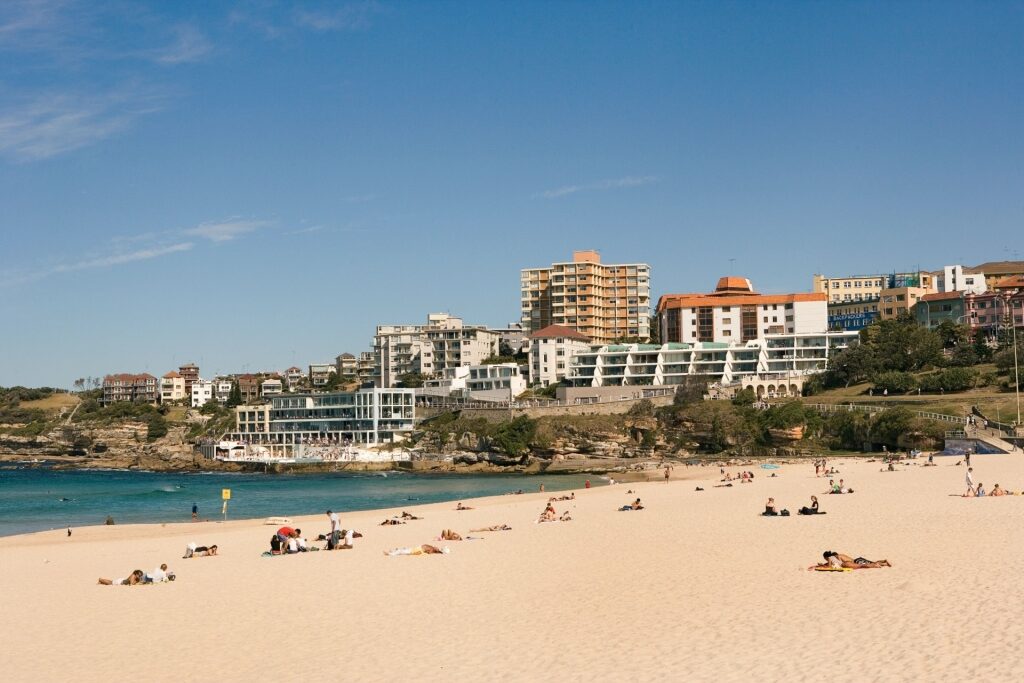
Bondi Beach
December to February is the height of summer in Sydney, with high temperatures, blue skies, and often, high humidity. Expect average daily temperatures of 75°F (24°C) in January and February, and at the same time, humidity. February is the second wettest month of the year, despite being summer, with 4.7 inches (120mm) of precipitation. Even on rainy days, though, the sea is blissfully warm for swimming.
This time of year can also be extremely warm in Sydney, with hot, dry winds blowing in from the desert. If you visit in summer, pace yourself in the heat, enjoy the breezes on a harbor cruise, and make the most of days at the beach.
Fall
March, April, and May are the balmy fall months in Sydney. Temperatures drop but remain mild; May, for example, sees a daily average of 61°F (16°C). Rainfall is a consistent average of 3.7 inches (95mm) a month throughout the season, with the days getting shorter.
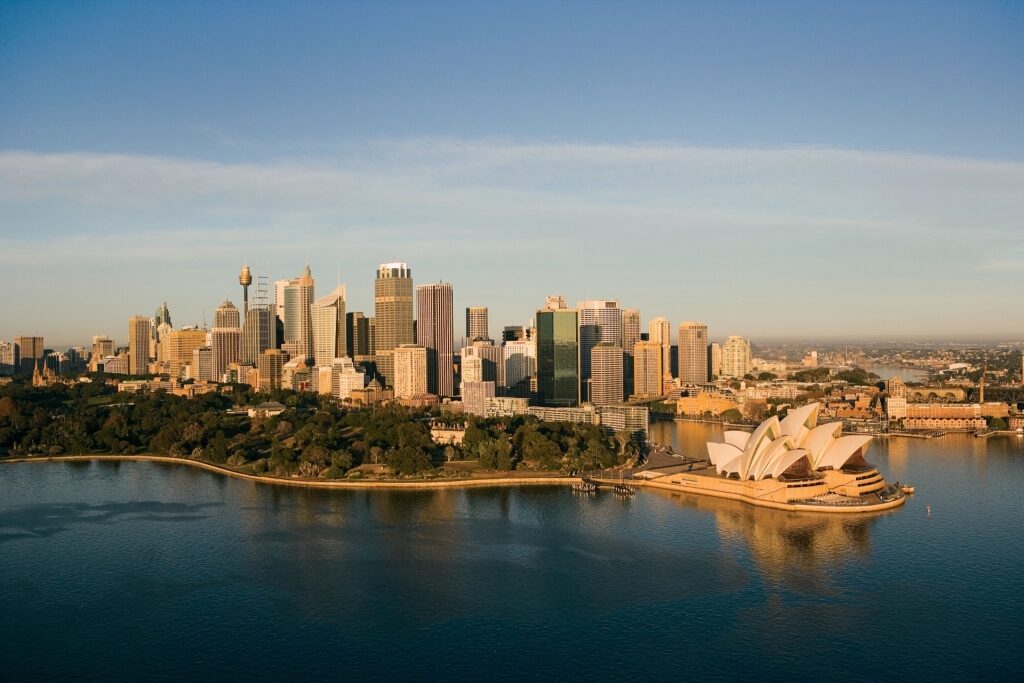
Sydney Opera House
Days are still generally bright and clear, making this a good time to head out of town to the Blue Mountains, explore the beautiful coastal walks, or enjoy the last warmth of summer at the beach.
Winter
June, July, and August—summer in the Northern Hemisphere—is winter in Sydney, with shorter days and considerably lower temperatures. July is the coolest month, with daily averages of 55°F (13°C), while June is the wettest, with 4.9 inches (125mm) of rainfall on average. The sea is around 66°F (19°C), bracing, but warm enough for surfing in a wetsuit. Winter is peak time for whale watching, too.
Sydney never gets really cold. Snow will fall in the distant mountains but not in the city; a light frost is as chilly as it gets. Do pack layers for a winter visit, though, as the temperature can vary considerably.
Spring
Spring in Sydney is from September to November, with fine days and an average of eight hours of sunshine daily. Rainfall is relatively low; October is the driest month of the year, with just 2.1 inches (55mm) of precipitation. Temperatures are increasing, reaching an average of 70°F (21°C) by November but in reality, with much higher peaks.
Purple jacaranda trees are in bloom all over the city, there’s a scent of jasmine in the air, and the sea is warming up for swimming. Many would say that this period is a sweet spot for visiting, before the humidity and crowds of the summer.
When Is Rainy Season?
Sydney has no rainy season, as such; it receives a fair amount of rainfall year-round. The wettest months, though, are February and June. Long periods of gray, overcast weather are unusual; rain is more likely to come in the form of intense downpours, thunderstorms, and hailstorms.
Pack layers and a waterproof jacket if you are visiting in June, as temperatures can drop. Needing layers doesn’t apply in February, which will still be hot, even on rainy days.
When Is High Season?
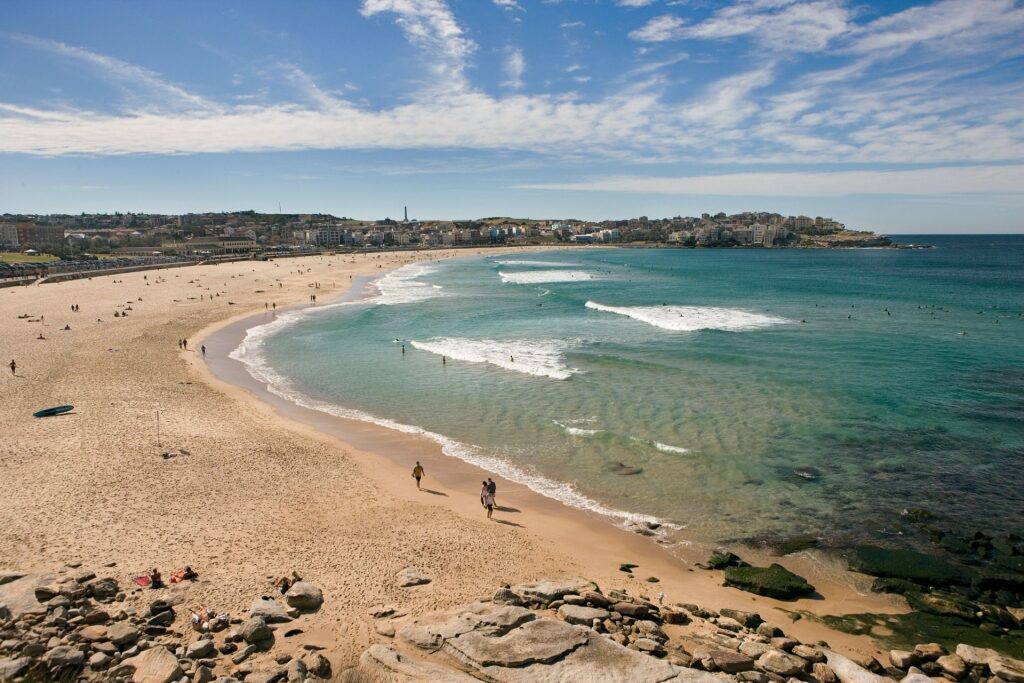
Bondi Beach
High season in Sydney is the summer months, December to February, when the days are hot and the nights humid. Expect the city to be busy now; schools are on vacation all through January and this is peak season for tourism.
Summer is a time for outdoor living and the proliferation of cultural and sporting events reflects this. The spectacular New Year’s Eve fireworks over Sydney Harbour Bridge and the Sydney Festival, which celebrates the arts throughout January, are just two reasons to visit. But there’s cricket, the Sydney to Hobart Yacht Race, and of course, the glorious Australian beaches to enjoy, too.
When Is Shoulder Season?
Shoulder season in Sydney is the spring months, September to November, and the fall, March to May, although in many ways these seasons are as pleasant as the summer. There’s always something going on, from Chinese New Year and the Gay and Lesbian Mardi Gras in February or March to Sculpture by the Sea in Bondi, the world’s biggest free sculpture exhibition, spanning the Bondi to Tamarama Coastal Walk for the second half of October.
November is a particularly delightful time to visit, with dry, sunny weather and up to eight hours of sunshine daily; arguably, if you don’t intend to spend your whole time at the beach, this is the best time to go to Sydney.
When Is Low Season?
Low season in Sydney is the Australian winter, June, July, and August, when the days are cooler and wetter. While the weather in Sydney can barely be described as cold—even frost is highly unusual—this is when Sydneysiders escape the “chill” for the ski slopes, or tropical Queensland, or further afield.
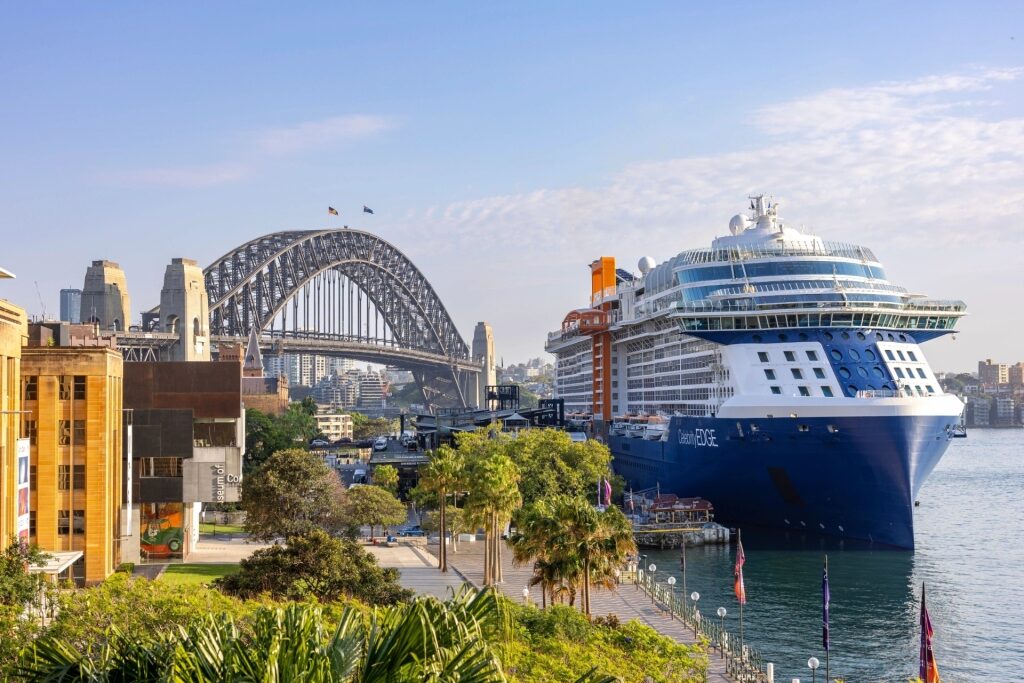
Sydney
Discover this showstopper city for yourself. Browse Celebrity’s cruises to Sydney and plan your adventure Down Under.
